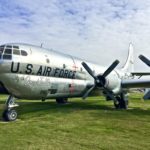The aircraft we present today is the single-seat aircraft that was used as the fighter aircraft by the United States Navy and the United States Marine Corps along with the United States Air Force from the era starting from the 1940s to mid-1970s. The Douglas A-1 Skyraider happened to have a long and very successful service career with the United States military. This piston engine-powered aircraft was the one that led the American military into the new age of jet-powered aircraft. It got its nickname of ‘Spad” which was named after one of World War I French fighter aircraft.
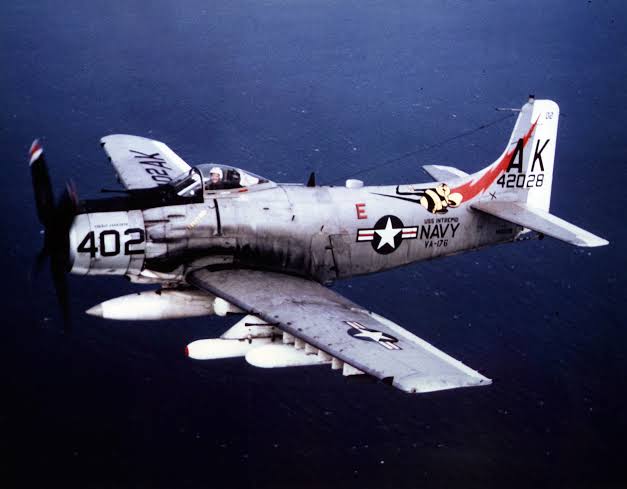
US Military and its various branches were not the only operators for the Douglas A-1 Skyraider. Other than the US a good number of other countries also operated the Douglas A-1 Skyraider for their respective air forces and naval fleets. The aircraft served well for the United States military unit 1975.
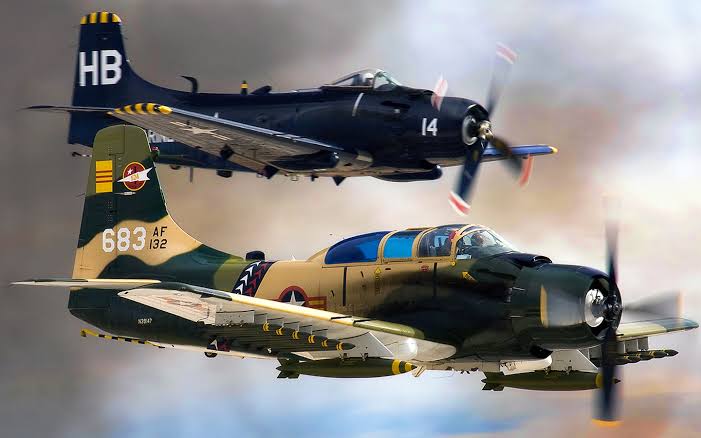
For our readers, we have gathered some of the interesting facts about the Douglas A-1 Skyraider which are as follows.
Origin:-

Back in the early 1940s, Douglas Aircraft tried to keep the US Navy interested in their designs for their aircraft by offering the US Navy with new fighters which could be based on aircraft carriers. Douglas created many such designs but alas, the majority of them got forgotten or gained little interest. Then an imitative took place in 1944 after discussion with the US Navy and the Douglas engineers came upon aircraft designs. The lead engineer of this project was none other than the famed aircraft designer named Ed Heinemann. Douglas Aircraft came upon a prototype model that was designated as XBT2D-1. This aircraft on the approval of the US Navy and Douglas got the contract for the delivery of 15 such aircraft.
First flight:-

The Douglas A-1 Skyraider under the designation of XBT2D-1 was unlived for the US Navy back in 1945. In order to test its first flight, the 15th March of that very same year was selected and the aircraft delivered the flight test perfectly. The great thing about the project was that it was delivered 4 months ahead of the scheduled date and presented no design or other electrical problems at all.
Design:-
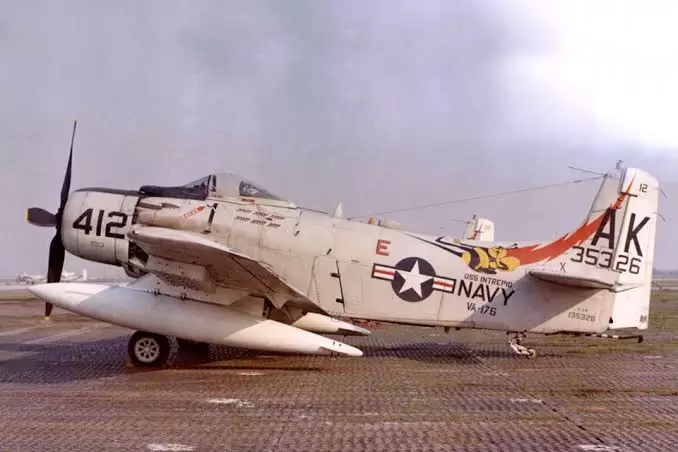
The Douglas A-1 Skyraider’s first prototype presented a new unique aircraft design for a bomber. They replaced the internal bombing bay to make room for extra fuel tanks as well as other equipment. The ordnance drop was managed under the wings of the aircraft for which 7 hardpoints were placed with one extra being placed under the fuselage.

2 extra hardpoints under the wings and the fuselage were placed to give extra fuel capacity in addition to the internal tanks. Due to the requirement of the aircraft to fly under the air defenses of the enemy at low altitudes, its cockpit was equipped with an armor plating weighing 200lbs. for the seat, it was placed under the bubble canopy right after the aft to present the pilot with an elevated view of his surroundings from around the wings and nose.
Missed action in World War II:-
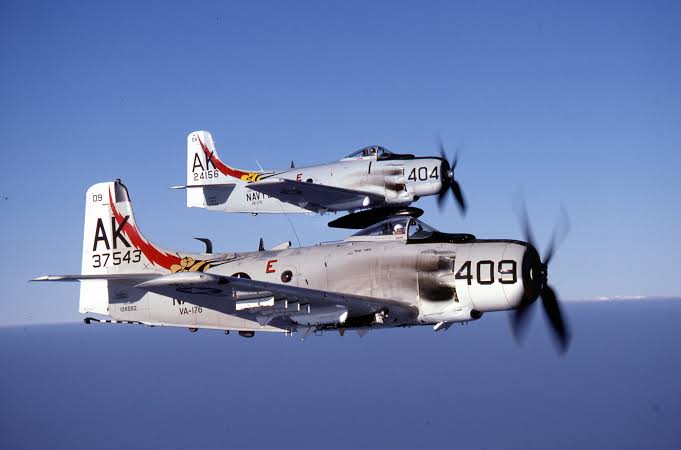
The Douglas A-1 Skyraider was presented for trials to the US navy in 145’s April and with only minor problems, the aircraft got approval from the S navy’s officials as well as the pilots. However, by the time, it was war ready; World War II came to an end in Europe with Japan falling down in August of 1945. Still, US navy did not cut back on the design and budget of the XBT2D-1 prototype as it did for many other aircraft and several others of its programs. Instead, US Navy only cut back on the production order to still keep the aircraft’s project alive which led to the creation of the aircraft under the designation Douglas A-1 Skyraider.
This was the reason that caused the Douglas A-1 Skyraider to not participate in World War II.
Debut in Korean War:-
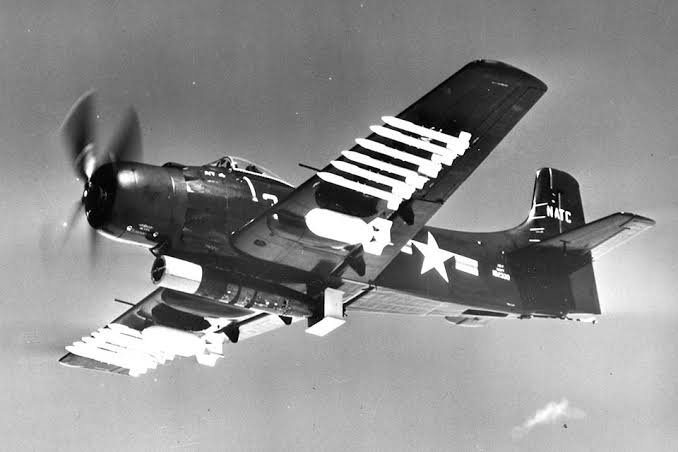
However, by the time the US Army was ready for the Korean War, so was the US navy’s fleet of Douglas A-1 Skyraiders. The aircraft actively took part on behalf of the US Navy from 1950 to 1953 and during that time, US Marine Corps also took in the Douglas A-1 Skyraider as they appreciated its bomber qualities for the CAS (Close Air Support) missions.
The very first time the Douglas A-1 Skyraider took action was on 3rd July 1950 when it took off from the flight deck of the US Air Carrier named “Valley Forge”. Only 1 Douglas A-1 Skyraider managed to achieve the air kill back on 16th July 1953 during the entire Korean War after it downed a Polikarpov Po-2 Mule; a fighter biplane. In addition to doing the bombing runs for US Navy and USMC, the aircraft was also sued for performing night strikes and radar jamming missions.
Number of Douglas A-1 Skyraiders lost in Korean War:-
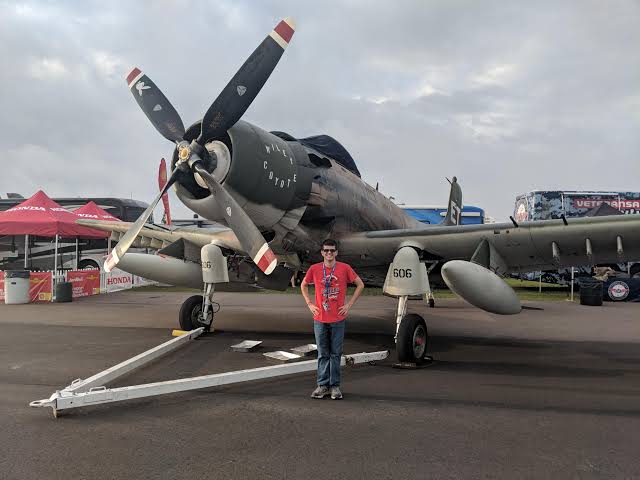
During the entire Korean War, a total of US army’s 128 Douglas A-1 Skyraiders were lost but still, 28 of them were lost in non-combat incidents. The main reason for non-combat losses was the tricky handling that came with the Douglas A-1 Skyraider.
Combating in Vietnam:-
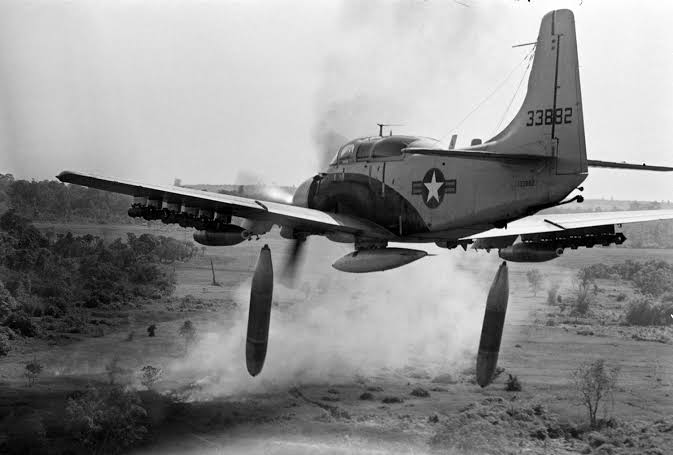
Seeing the effectiveness of the Douglas A-1 Skyraider in the Korean War, the aircraft was then used for the entire Vietnam War from 1955 to 1975 where an aircraft with ordnance hauling and endurance bearing qualities were required. The Douglas A-1 Skyraider proved to be a good working aircraft as when Russian built MiG-17 downed a friendly aircraft of US, Douglas A-1 Skyraider would loiter for a long time over the skies to provide the CAS to their downed pilots to give enough time for the rescue helicopters to make the rescue.
By the time Vietnam War was ending, the Douglas A-1 Skyraider started to make way for the jet-powered aircraft such as the Douglas A-4 Skyhawk and the Grumann A-6 Intruder. During the Vietnam War, Douglas A-1 Skyraider suffered major losses as a total of 266 of them were lost and nearly 201 were of the United States Air Force.
Other Operators:-

Apart from the United States Navy and Air force, other countries realized the potential of Douglas A-1 Skyraider and incorporated them into their fleet of the air force or navy. Countries that operated the Douglas A-1 Skyraider are as follows.
- United Kingdom
- France
- Cambodia, Central African Republic
- Chad
- Gabon
- Vietnam
- South Vietnam
- Thailand
- Sweden
Armament:-
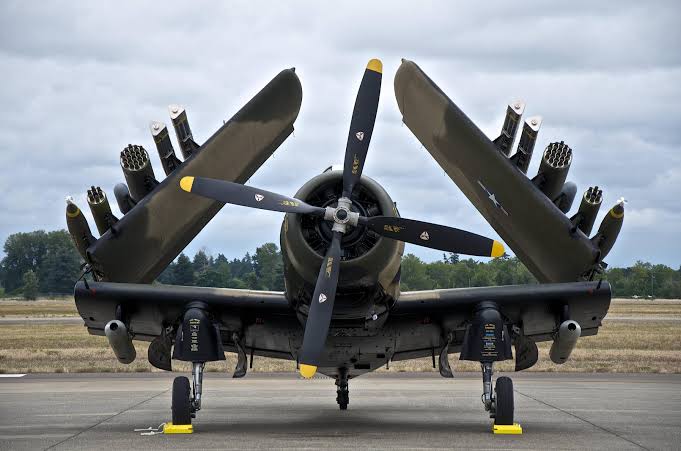
All in all a single Douglas A-1 Skyraider was built with 15 external hardpoints for equipping it numerous ordnance such as rocket pods, rockets, mine dispensers, torpedoes, fuel tanks, and even the conventional nuclear drop bombs.
A standard armament feature of the Douglas A-1 Skyraider was to have 2 or 4 of the 20 mm autocannons on its wings.
Powerplant:-

The aircraft was powered up by a single Wright R-3350-24W radial piston engine for creating a power of 2500HP from its 4-blade propeller. This engine gave the aircraft a top flying speed of 321 mph for a range of 1553 miles. The aircraft could fly at a ceiling of 26001 feet which it was able to achieve with the climbing rate of 2300 feet per minute.
Retirement:-

The US Military retired the Douglas A-1 Skyraider from its all branches back in 1975 and the last one to operate it in the foreign operators was the Gabonese Ari Force. They retired their last Douglas A-1 Skyraider back in 1985.
Related Content
Some little known facts about the Boeing KC-97 Stratofreighter; The Strategic Tanker
Interesting facts about the Boeing P-26 Peashooter; The First American All-Metal Fighter
Little known facts about the Boeing MQ-25 Stingray; the UAV Aerial Tanker



